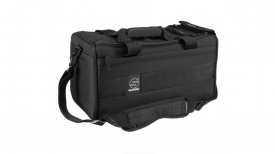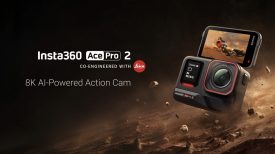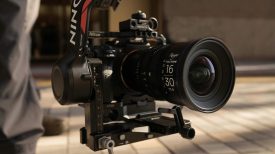By Ed Jones:
Hong Kong Taxi from Ed Jones on Vimeo.
In December 2011 I was posted to Beijing after several years in Hong Kong. Before leaving Hong Kong I wanted to produce a timelapse video that would make use of the city’s fast-paced lifestyle and its brightly lit streets.
It occurred to me that to show it from the perspective of one of the city’s familiar red taxis would be something that viewers could enjoy and easily relate to. I hoped that it would evoke the feelings of seeing any city for the first time, which for many is often from the windows of a cab.
Over a year earlier I had taken a taxi while returning from an assignment and had a good conversation with the driver about photography. We had kept in touch since then and so I pitched my idea to him. He agreed and we arranged to shoot some footage with a Canon 5D mkII mounted in various positions on the outside of his cab with a suction mount.
Sadly the resulting footage was shaky; it could have been improved using bigger and better mounts, but the rig I set up was already too cumbersome to leave on the cab while the driver undertook his shift. Shooting the timelapse with the 5D mkII necessitated using a separate interval timer which also added to the equipment that had to be fastened to the exterior of the car.
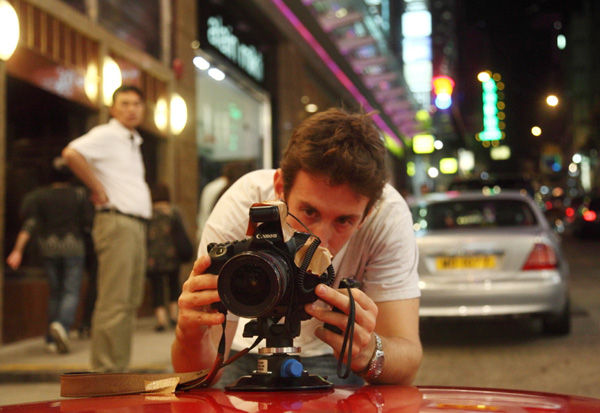
I wanted the rig to stay on the taxi for a whole shift because I needed to show the cab stopping and starting as it picked up customers and delivered them around the territory, the light on its roof flickering on and off.
As an alternative I tried out a GoPro with a suction mount, set to its shortest timelapse interval of two seconds. The unit was small enough not to attract attention, and – should the mount fail at high speed – accidentally losing it would be favourable to losing the 5D mkII. The images were noisier than from the 5D, but the dimensions of the camera’s five megapixels stills meant that once downsized to HD video frame size that was less noticeable. To improve the image further I de-noised the frames from the GoPro in Adobe Photoshop before using Quicktime to compile them into a timelapse. In any case, I’m not particularly fussy about noise levels in my photos and will happily resort to sky-high ISOs if that allows me to take a picture that I couldn’t otherwise.
To introduce the time-lapse sequence I shot a basic narrative to illustrate the start of the taxi driver’s shift, up to the moment that he picks up the first passenger. The intro also features a few timelapse segments of the Hong Kong skyline at dusk, as rush-hour approaches and the city’s lights start to illuminate the territory. These skyline time-lapses were shot with the 5D mkII, and the camera’s resolution meant that I was able to create virtual tracking shots by cropping and panning over the frame sequences in Final Cut Pro. I’m sure some consider this cheating, but if it means carrying less equipment then I’m in favour. For the tracking time-lapse shot of tourists at the waterfront the camera was balanced on top of a bin/trash can. For the low angle shot of the driver walking to the taxi my mobile phone was perfect to prop up the lens at just the right angle.
Ambient sound audio from the streets was sufficient for the video segments, but for the main timelapse I was going to need music. I looked into finding a soundtrack online but licensing would have been a problem, given that the video would be committed to the AFP archives which are available to its many clients. In the end I recorded the music myself using my guitar and some sampling software.
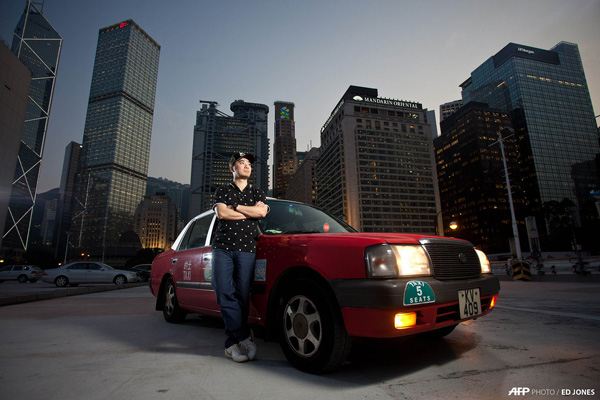
There is undoubtedly much room for improvement in the finished video. With better planning the result could have appeared more polished. I felt that the two-second interval on the GoPro was too long and that half-a-second would have been smoother and provided a better pace to the time-lapse. That said, the approach to this piece was to do it quickly and as cost-effectively as possible, without the need for any significant increase in equipment over my regular kit. It’s very different from the sort of videos that AFP usually produces – it’s great to have the occasional outlet for more conceptual work.
Most of all I was lucky to have the patience and understanding of a very kind and generous taxi driver.
Ed Jones is a staff photographer with AFP.Formerly based in Hong Kong he now works in the company’s Beijing bureau




